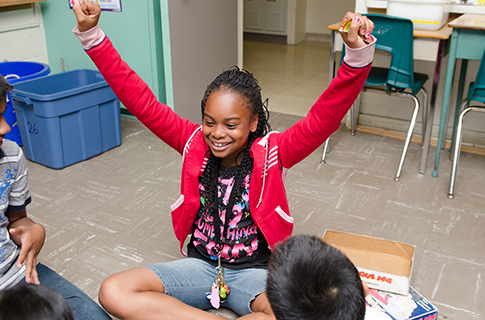Type and Purpose of Learning
Through language play-based learning students explore new words, listen, ask and answer questions, and develop their vocabulary. Physical play can reinforce language learning by having students move their bodies to make connections with the sound and sight of the words. In doing so, students also demonstrate an increased sense of community and belonging.





